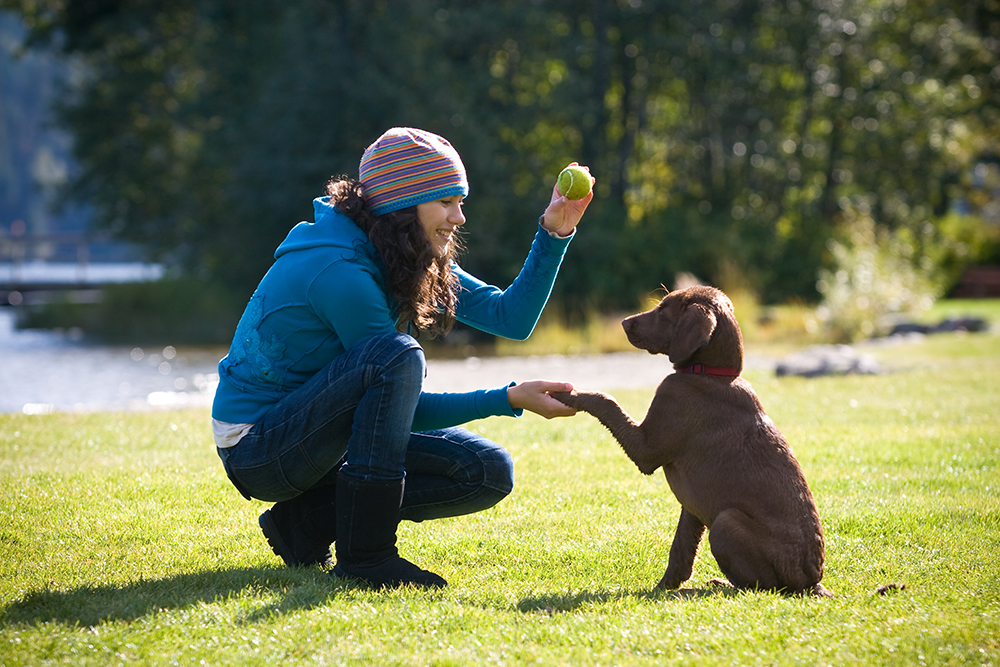How Often Do You Walk Your Dog – 4 Things You Need To Know

It’s commonly said that frequent walks contribute to a healthy lifestyle, but does this apply to dogs as well? Also, how frequently do you take your dog for a walk?
It is recommended that you walk your dog daily and gradually increase it to 2 to 3 times a day for at least 10-15 minutes for each walk, depending on your dog’s pace. This will keep them active and help with their weight control.
If you’re still uncertain about the frequency at which to walk your dogs or how much exercise your dog necessitates…
Here’s what to consider….
How Important Are Dog Walks?
Here’s the big secret…
Regardless of what size your dog is, it requires regular exercise.
Exercise is an excellent approach to maintaining your dog’s physical and emotional health. But how frequently should a dog be walked?
Trust us…
You’re not the only one who wonders how frequently you should walk your dog. This is a common query among pet owners, especially new pet owners.
The dog’s demands should determine the frequency of your pet’s daily walks; it’s crucial to remember.
To understand how vital dog walking is, continue reading further….
Vets in the world generally suggest taking your dog on a walk for at least 20 minutes three to four times daily.
However, this may change depending on your dog’s:
- Breed
- Size
- Health
- Dietary preferences
Smaller dog breeds might benefit from just one daily stroll, but high-energy dog types will need multiple walks. Is your dog one of those dog breeds?
Are you a sporty person who wishes to exercise more with your dog?
A trip to the vet is advised in that situation. They will be pleased to offer you practical hints and walking guidance tailored to the particular conditions involving your dog.
Walking is the Best Physical Exercise

Matter of fact…
Did you know younger, more energetic dogs naturally benefit immensely from frequent walks, whereas older dogs with mobility issues may require fewer walks?
Like humans, young dogs need more exercise than older ones, regardless of breed type. They need it to grow their mental stimulation.
So, don’t forget to walk your dog. A simple walk and quality time are essential.
A dog who is ill or injured might not be able to walk very far. Work with your vet to create a workable exercise schedule for your dog in that situation.
Dog walks benefit your dog’s health regardless of age and good shape.
Improves joint health
A dog sitting at home for many hours or other factors might make its joints really hard, and it will have trouble walking for the next few days.
Look, it gets better….
If your dog keeps walking frequently, then it’s a good sign!
Walk your dog or puppies so that its joints will be mobile and the dog will maintain its physical fitness.
Digestive Health
When you walk your dog, they stretch, urinate, and defecate, and this is normal because all of these things are beneficial for better health.
This keeps the dogs’ digestive systems healthy and helps their bodies function usually.
Weight loss
Walking is great. Just like humans, walking affects dogs in the same way; It is an excellent way to burn calories. When you regularly walk your dog, it not only helps your dog in burning excess calories but also helps maintain a healthy weight.
4 Things to Consider Before Walking A Dog
1. Breed
Here’s the thing….
The breed of your dog is the most important thing to consider before making it engage in any exercise.
Compared to lapdog species like Papillons and Yorkshire Terriers, working and sports types like Shepherds, Pointers, and Collies require more exercise.
While some breeds of dogs are inherently sporty and energetic, others live more sedentary lives. Of course, a dog’s breed or personal preferences could be to blame for this.
2. Senior Dogs and Junior Dogs
Junior dogs frequently have high energy levels, so you can anticipate that most puppies need daily exercise more than their older and middle-aged colleagues.
They also prefer to exercise more frequently than older canines.
Older dogs (9 years and older) and dogs in their middle age range (5 to 8 years) may be more susceptible to atrophy, arthritis, and other health conditions that might reduce their stamina, such as diabetes and hypothyroidism.
Well, let’s face it….
All dogs love to exercise, don’t they? But, the older the dog, the harder it gets to exercise for a long time. Age matters. Sadly.
3. Environment Observations
The number of walks your dog needs depends on where and how you live.
You might need to take your dog for walks more regularly during the day if you live in a cramped apartment with little room to run around and explore. This is not good at all if you have an active dog.
They can have valuable time away from their typical living area, enjoy outdoor play, and discover new locations by walking.
In contrast, if you reside in a house with a sizable backyard, your dog would require fewer walks, particularly if the yard has a roomy area for them to play in, poop in, where you can clean after your dog and run around in.
This does not, however, imply that you should replace indoor playtime with dog walks.
4. Health
A healthy dog can benefit from a daily stroll of 15 to 30 minutes. The majority of breeds may require daily walks regularly.
Additionally, healthy dogs can take pleasure in lengthy walks lasting up to two hours or longer.
Some high energy dog breeds may spend a few hours hiking with their owners.
However, dogs with health conditions like diabetes and obesity may find walking challenging for an extended period without sometimes stopping to relax.
Tips and Advice for Longer Walks

Walking with your dog can be fun in multiple ways. Your dog depends on you at times.
Long walks are lovely; not going to lie. But, our advice for your walk time is to invest the time in trying to socialize with your dog and train them.
This will build a strong bond, and the dog will get comfortable with you and your actions.
Sure, long walks are enjoyable but don’t exceed the time with your dog and try not to walk them fast and maintain a leisurely walking pace.
Instead, do regular walks for short intervals, especially if you have younger dogs. Short walks are always better.
Click here to learn more about bonding with your pet.
Other Activities
So what’s the solution?
It’s okay if you don’t like taking your dog on a stroll for a long time. You can hire a dog walker.
You can always try new activities if you have younger dogs at home. Different kinds of dog sports can be explored indoors.
This goes for adult dogs as well.
Make it entertaining and good for your furry friend by inventing and trying different things.
For every particular dog, exercise can help prevent sickness and boost your dog’s health and overall well-being. Think of it as a type of preventive treatment.
Active dogs are the best dogs!
FAQ’s
How many dogs can you walk at one time?
Physical activity is essential for every dog. You can walk as many other dogs as you like. It’s better if it’s one or two so that it’s easier to handle them and give them your full attention.
Are short walks fine? Provide a short answer.
There’s no general rule regarding walking your dog. Shorter walks are simple and just as good as lengthy walks. Most dogs like walking for a more extended period than some. It depends.
What should I take along while I walk my dog?
There are a lot of things you should keep in your mind before you walk longer with your dog. Keep a plastic bag in case you need to stop for potty breaks. Apart from this, don’t forget to take water for you and your dog to drink.
How long should I walk a Small Dog?
Smaller dogs or puppies tend to be better at walking than large dogs. But this does not mean walking your dog for long hours or giving them too much exercise.
They can develop health issues or get dehydrated soon, so keep it short and straightforward. We also recommend waiting at different stops where you can rest.
How often do you walk your dog?
A dog belongs in a physical surrounding. They need enough exercise to stay focused and in shape. Therefore, the more walks, the merrier.
It is recommended that you walk your dog daily and gradually increase it to 2 to 3 times a day, depending on your dog’s pace. This will keep them active and help with their weight control.
Images from Unsplash.com
